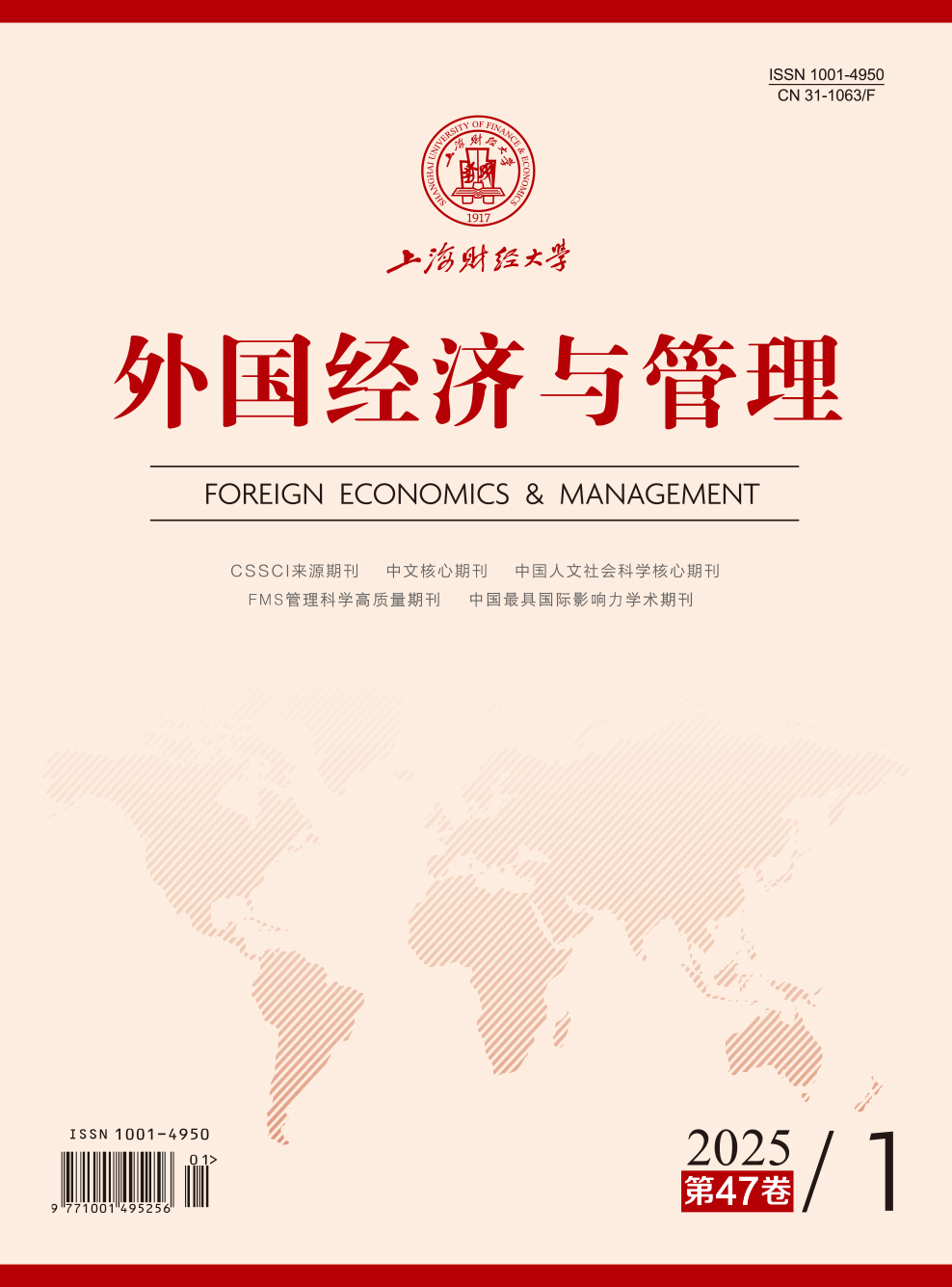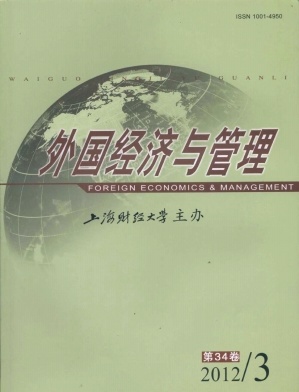工作场所员工非伦理行为研究述评与展望
外国经济与管理 2012 年 第 34 卷第 03 期, 页码:40 - 48
摘要
参考文献
摘要
工作场所员工非伦理行为广泛存在于各类组织中,并对组织的可持续发展产生不可估量的危害。本文基于文献述评,阐述了工作场所员工非伦理行为的概念,介绍了工作场所员工非伦理行为的两种主要的测量方法,分析了工作场所员工非伦理行为的三个主要的情境诱发因素,总结了工作场所员工非伦理行为的个人层面和组织层面影响因素,指出了工作场所员工非伦理行为的主要后果,最后指出了在我国开展工作场所员工非伦理行为研究的重点议题。
[1]Aronson E.Integrating leadership styles and ethical perspec-tives[J].Canadian Journal of Administrative Sciences,2001,18(4):244-256.
[2]Ashforth B E and Anand V.The normalization of corruption in organizations[J].Research in Organizational Behavior,2003,25(1):1-52.
[3]Baker T L,et al.Promoting ethical behavior and organizational citizenship behaviors:The influence of corporate ethical values[J].Journal of Business Research,2006,59(7):849-857.
[4]Barnett T,et al.Ethical ideology and ethical judgment regard-ing ethical issues in business[J].Journal of Business Ethics,1994,13(3):469-480.
[5]Barnett T and Vaicys C.The moderating effect of individuals’perceptions of ethical work climate on ethical judgments and behavioral intentions[J].Journal of Business Ethics,2000,27(3):351-362.
[6]Brass D J,et al.Relationships and unethical behavior:A social network perspective[J].Academy of Management Review,1998,23(1):1-18.
[7]Brown M E,et al.Ethical leadership:A social learning per-spective for construct development and testing[J].Organiza-tional Behavior and Human Decision Processes,2005,97(2):117-134.
[8]Dertert J R,et al.Moral disengagement in ethical decision making:A study of antecedents and outcomes[J].Journal of Applied Psychology,2008,93(2):374-391.
[9]Donald P.Extending the process model of collective corruption[J].Research in Organizational Behavior,2008,28(2):107-135.
[10]Ford R C and Richardson W D.Ethical decision making:A review of empirical literature[J].Journal of Business Ethics,1994,13(2):205-221.
[11]Gino F and Pierce L.The abundance effect:Unethical beha-vior in the presence of wealth[J].Organizational Behavior and Human Decision Processes,2009,109(2):142-155.
[12]Greenberg J.Who stole the money and when?Individual and situational determinants of employee theft[J].Organizational Behavior and Human Decision Processes,2002,89(1):985-1003.
[13]Hosmer L T.Ethical analysis and human resource manage-ment[J].Human Resource Management,1987,26(3):313-330.
[14]Jones T M.Ethical decision making by individuals in organi-zations:An issue-contingent model[J].Academy of Manage-ment Review,1991,16(2):366-395.
[15]Kaptein M.Developing a measure of unethical behavior in the workplace:A stakeholder perspective[J].Journal of Manage-ment,2008,34(5):978-1008.
[16]Kish-Gephart J J,et al.Bad apples,bad cases,and bad bar-rels:Meta-analytic evidence about sources of unethical deci-sions at work[J].Journal of Applied Psychology,2010,95(1):1-31.
[17]Paine L S.Managing for organizational integrity[J].Harvard Business Review,1994,72(2):106-117.
[18]Peterson D.The relationship between unethical behavior and the dimensions of the ethical climate questionnaire[J].Jour-nal of Business Ethics,2002,41(3):313-326.
[19]Peterson D.Perceived leader integrity and ethical intentions of subordinates[J].The Leadership and Organization Devel-opment Journal,2004,25(1):7-23.
[20]Tang L K and Chen Y.Attitude toward and propensity to en-gage in unethical behavior:Measurement invariance across major among university students[J].Journal of Business Ethics,2006,69(1):77-93.
[21]Tang T L,et al.The love of money,Machiavellianism,risk tolerance,and unethical behavior[J].Management Decision,2008,46(2):243-263.
[22]Trevino L K.Ethical decision making in organizations:A per-son-situation interactionist model[J].Academy of Manage-ment Review,1986,11(3):601-617.
[23]Trevino L K and Ball G A.The social implications of puni-shing unethical behavior:Observers’cognitive and affective reactions[J].Journal of Management,1992,18(4):751-768.
[24]Trevino L K,et al.A qualitative investigation of perceived executive ethical leadership:Perceptions from inside and outside the executive suite[J].Human Relations,2003,56(1):5-37.
[25]Trevino L K and Weaver G R.Organizational justice and ethics program“follow-through”:Influences on employees’harmful and helpful behavior[J].Business Ethics Quarterly,2001,11(4):651-671.
[26]Trevino L K,et al.Behavioral ethics in organizations:A re-view[J].Journal of Management,2006,32(6):951-990.
[27]Werbel J and Balkin D B.Are human resource practices linked to employee misconduct[J].Human Resource Mana-gement Review,2010,20(4):317-326.
[28]科尔伯格.道德发展心理学:道德阶段的本质与确证[M].(郭本禹等译).上海:华东师范大学出版社,2004.
[29]谭亚莉等.管理者非伦理行为到组织腐败的衍变过程、机制与干预:基于心理社会微观视角的分析[J].管理世界,2011,(12):68-77.
[2]Ashforth B E and Anand V.The normalization of corruption in organizations[J].Research in Organizational Behavior,2003,25(1):1-52.
[3]Baker T L,et al.Promoting ethical behavior and organizational citizenship behaviors:The influence of corporate ethical values[J].Journal of Business Research,2006,59(7):849-857.
[4]Barnett T,et al.Ethical ideology and ethical judgment regard-ing ethical issues in business[J].Journal of Business Ethics,1994,13(3):469-480.
[5]Barnett T and Vaicys C.The moderating effect of individuals’perceptions of ethical work climate on ethical judgments and behavioral intentions[J].Journal of Business Ethics,2000,27(3):351-362.
[6]Brass D J,et al.Relationships and unethical behavior:A social network perspective[J].Academy of Management Review,1998,23(1):1-18.
[7]Brown M E,et al.Ethical leadership:A social learning per-spective for construct development and testing[J].Organiza-tional Behavior and Human Decision Processes,2005,97(2):117-134.
[8]Dertert J R,et al.Moral disengagement in ethical decision making:A study of antecedents and outcomes[J].Journal of Applied Psychology,2008,93(2):374-391.
[9]Donald P.Extending the process model of collective corruption[J].Research in Organizational Behavior,2008,28(2):107-135.
[10]Ford R C and Richardson W D.Ethical decision making:A review of empirical literature[J].Journal of Business Ethics,1994,13(2):205-221.
[11]Gino F and Pierce L.The abundance effect:Unethical beha-vior in the presence of wealth[J].Organizational Behavior and Human Decision Processes,2009,109(2):142-155.
[12]Greenberg J.Who stole the money and when?Individual and situational determinants of employee theft[J].Organizational Behavior and Human Decision Processes,2002,89(1):985-1003.
[13]Hosmer L T.Ethical analysis and human resource manage-ment[J].Human Resource Management,1987,26(3):313-330.
[14]Jones T M.Ethical decision making by individuals in organi-zations:An issue-contingent model[J].Academy of Manage-ment Review,1991,16(2):366-395.
[15]Kaptein M.Developing a measure of unethical behavior in the workplace:A stakeholder perspective[J].Journal of Manage-ment,2008,34(5):978-1008.
[16]Kish-Gephart J J,et al.Bad apples,bad cases,and bad bar-rels:Meta-analytic evidence about sources of unethical deci-sions at work[J].Journal of Applied Psychology,2010,95(1):1-31.
[17]Paine L S.Managing for organizational integrity[J].Harvard Business Review,1994,72(2):106-117.
[18]Peterson D.The relationship between unethical behavior and the dimensions of the ethical climate questionnaire[J].Jour-nal of Business Ethics,2002,41(3):313-326.
[19]Peterson D.Perceived leader integrity and ethical intentions of subordinates[J].The Leadership and Organization Devel-opment Journal,2004,25(1):7-23.
[20]Tang L K and Chen Y.Attitude toward and propensity to en-gage in unethical behavior:Measurement invariance across major among university students[J].Journal of Business Ethics,2006,69(1):77-93.
[21]Tang T L,et al.The love of money,Machiavellianism,risk tolerance,and unethical behavior[J].Management Decision,2008,46(2):243-263.
[22]Trevino L K.Ethical decision making in organizations:A per-son-situation interactionist model[J].Academy of Manage-ment Review,1986,11(3):601-617.
[23]Trevino L K and Ball G A.The social implications of puni-shing unethical behavior:Observers’cognitive and affective reactions[J].Journal of Management,1992,18(4):751-768.
[24]Trevino L K,et al.A qualitative investigation of perceived executive ethical leadership:Perceptions from inside and outside the executive suite[J].Human Relations,2003,56(1):5-37.
[25]Trevino L K and Weaver G R.Organizational justice and ethics program“follow-through”:Influences on employees’harmful and helpful behavior[J].Business Ethics Quarterly,2001,11(4):651-671.
[26]Trevino L K,et al.Behavioral ethics in organizations:A re-view[J].Journal of Management,2006,32(6):951-990.
[27]Werbel J and Balkin D B.Are human resource practices linked to employee misconduct[J].Human Resource Mana-gement Review,2010,20(4):317-326.
[28]科尔伯格.道德发展心理学:道德阶段的本质与确证[M].(郭本禹等译).上海:华东师范大学出版社,2004.
[29]谭亚莉等.管理者非伦理行为到组织腐败的衍变过程、机制与干预:基于心理社会微观视角的分析[J].管理世界,2011,(12):68-77.
引用本文
谭亚莉, 廖建桥, 王淑红. 工作场所员工非伦理行为研究述评与展望[J]. 外国经济与管理, 2012, 34(3): 40–48.
导出参考文献,格式为:





 6969
6969  350
350

